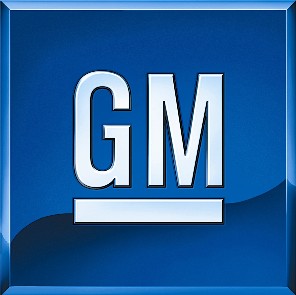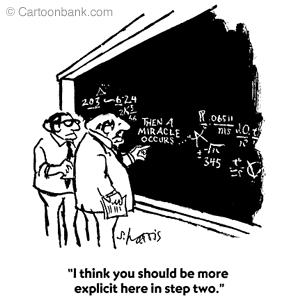04.27.2010 original publish date
10.29.2010 updated broken links/ minor editing

Did GM Repay Its Debts? A Lesson in Semantics
original article written by Net Advisor™
DETROIT, Michigan. General Motors (GM) stated that they repaid the U.S. Treasury and Canadian Governments back their bail-out loans, and apparently did so way ahead of schedule. (Source: Reuters)
Somehow I wasn’t quite sure if this news was entirely accurate. I have seen so much manipulation of loan and government data over the last few years, so I had to take a look at this story at greater depth.
Background:
I have answered over 78 questions (posts) on General Motors from about June 2008 to July 2009 (78 GM Posts linked here). GM went into bankruptcy and placed all their “bad assets” in a new entity called “Motors Liquidation Company,” no further obligation or related to General Motors. The new GM then took all the “good assets” in a court approved “363 Exchange.”
I also wrote a Motors Liquidation Company FAQ page to try to help people from making a serious investment mistake by purchasing what they thought was GM, and in fact is actually the technically worthless, Motors Liquidation Company (MTLQQ).
I have probably answered a dozen or so question since this work which I have stopped keeping track exactly how many. So I felt that I have some familiarity with this case. Then as I read the recent story of GM claiming to pay back its loans, I found that this is only true from a certain point of view.
If you are employed by GM, the FED, or the Obama Administration, GM paid back its TARP loans in full. If you are a tax payer who funded the GM Bailout, you are still sitting in a big fat deficit that has not been repaid by the slightest.
How can General Motors say they paid back their loans when they really haven’t?
Welcome to Government Financial Semantics 101
According to published reports, GM, Chrysler and GMAC received a combined approximately $79 Billion in tax payer bailout money. (Sources: Newsweek, National Taxpayers Union, TARP Congressional Oversight Panel)
Company Taxpayer funds (net) in billions to date Equity owned by U.S. government GM $52.9 61% Chrysler $13.5 10% GMAC $12.5 35% Total $78.9
(Chart Source: National Taxpayers Union)
GM declared in its 2009 bankruptcy filing that it hasn’t made a profit since 2004, and had $172 billion in debt and $82 billion in assets. (Source: The Wall Street Journal)
Even after the GM bailout, post bankruptcy, GM has continued to lose money.
“GM reported a net loss of $4.3 billion for the period from its emergence from bankruptcy in July through the end of 2009, including a $3.4 billion net loss for the fourth quarter.” (Source: Reuters) However, despite the actual losses, GM says there are on track for future profits as early as this year.
LESSON 1: Exclude All the Bad News
- So our first lesson in government financial semantics, is that you exclude all the bad news. This removes $29 billion of bad debt from the equation and the bad press (Chrysler + GMAC loans from chart above).
LESSON 2: Come Up with a Different Way to Pay Back the Loans
- The only way GM is ever going to attempt and repay that full loan is that you get the government to convert almost all of that debt into equity (stock).
- Time for math now. GM repaid $4.7 billion of TARP loans back to the Treasury. That leaves $48.2 Billion still unaccounted for. This $48.2 Billion may not include any accrued interest on the loan. Again, we are not including the loans made to GMAC – the financing arm of GM in this scenario. We are also not including the Chrysler loans here either, which is a separate nightmare.
LESSON 3: Didn’t we tell you it was $80 Billion?
- Ford, who did not take any government bailout money, has managed to do pretty well with sales and earnings picking up market share off GM and Chrysler including in Europe. The American public who was outraged at the auto bailout, said they would 46% more likely buy Ford over GM and Chrysler.
- As of 04-26-2010 market close, Ford had a market capitalization (“market cap”) of $48.71 Billion, about the same dollar amount the U.S. tax payer needs to break even on loans to GM alone; loans that is now converted to privately held GM stock.
- So GM needs to not only be equal to Ford, it needs to be much bigger than Ford. Remember, the tax payers own 60.8% of GM. Thus, GM needs an approximate market cap of $80 Billion to cover the 60.8% stock ownership that the tax payer is holding to just break even.
- Math: $80 billion (GM hypothetical market cap) x 60.8% tax payer equity interest (shares of stock) in GM = $48.64 Billion. (In summary: $80 billion x 60.8% = $48.64 Billion).
- Remember, $48.2 Billion was the original GM bailout loans that were converted from debt to stock.
- Now my math of approximately $80 Billion in market cap for new GM is greater than the Congressional Oversight Panel’s (09-09-2009 report). One needs to count not only the U.S. tax payers portion of stock, but also the other 39.2% held by other parties involved in the bailout. (60.8% tax payer shares +39.2% held by Canada, UAW, and GM bondholders = 100%). Even if we go by the Congressional Oversight Panel’s 2009 math, the panel states the IPO scenario is overly optimistic in order to pay back the tax payers with sales of GM stock.
“…the nearly $50 billion sunk into GM would require the company’s stock to reach levels higher than ever before. (In) order for the Treasury, or taxpayers, to break even, the total value of GM would have to rise to $67.7 billion, much higher than the $57.2 peak value reached during the company’s peak in April 2008. To show how optimistic these levels are, total market value of GM currently stands at around $7 billion.” (Source: TARP Congressional Oversight Panel)
- Thus by the governments own analysis, GM would have to grow almost 10 times bigger than it is now, and that would be to be bigger than it was pre-2009 bankruptcy.
- The TARP Oversight Panel has completely ignored the fact that there is other legal owner interest in GM (39.2% held by Canada, UAW, and GM bondholders). Thus, as said earlier, the value of new coming GM stock must be closer to $80 Billion for tax payers to break even, not the $67.7 Billion as the TARP Oversight Panel has suggested.

LESSON 4:Build a Time Machine. Go back to 1999. Say, “GM is going to sell cars on-line.” — Stock goes from $67 to $300 in 3 days.
- Naturally I am joking a little about the title for Lesson 4. This is just a reminder of what it was like during the .com boom of the late 1990’s. Anyone who had a website and tried to do anything and went public with the idea, made billions in many cases overnight. All you had to do is say you are going to sell something or offer something over the Internet. I have some hilarious examples of this which I have saved from that heyday and will publish at a later date.
- So here is the problem: GM needs an IPO that can give the automaker a market cap of $80 billion. We’ll with all the $100’s of billions and trillions in spending going on in Washington, should this be so hard to do? Answer: Yes.
- Let’s take some perspective. The biggest IPO in the history of the world was Visa, Inc. Visa went public on 03-19-2008 and its IPO proceeds? $17.9 Billion. (Source: CNBC)
- So how many Visa’s do you need to equal one GM? —this isn’t a joke — Answer: About 4 1/2 ($17.9 Billion Visa IPO x 4 1/2 that to get to a GM IPO of $80.55 billion).
- Do you think the IPO market is hot? Answer: No.
- The Visa IPO hit the market in the early spring 2008, well before the entire economy and banking system came to near collapse that fall. Good Luck with that.
- The Treasury Department, the one who is holding our GM taxpayer stock for us, knows all this:
According to the GAO, “Treasury’s own analysis suggests that the circumstances necessary for the companies to reach market capitalization high enough for Treasury to fully recover its equity investment are unlikely.”[17] Put more bluntly, the U.S. government does not expect to recover the taxpayers’ funds (GAO November 2009, p. 27.) (Citation Source: National Taxpayers Union)
LESSON 5: Back to Reality
- Right now, the U.S. Government and GM are in the above Lesson 2 and can’t figure out how to get to Lesson 3.
- So we have learned that even when you exclude all the bad news, turn almost all of the debt into equity, make a token payment and call your debt “paid;” tell everyone how profitable you are going to be in the future, even though you are still losing billions… but whatever you do, don’t tell tax payers how big you really have to be in order to really pay off that true cost of borrowed taxpayer money. Taxpayers might get upset if you tell them the truth about how twisted government financing and semantics has become in order to make GM look good – or is it, to make those who supported the GM bailout in government look good?
- Class dismissed.
GM Logo ©/TM General Motors
Cartoon image © Cartoonbank.com
Copyright © 2010 Net Advisor™
Revised Copyright © 2013 NetAdvisor.org® All Rights Reserved.
NetAdvisor.org® is a non-profit organization providing public education and analysis primarily on the U.S. financial markets, personal finance and analysis with a transparent look into U.S. public policy. We also perform and report on financial investigations to help protect the public interest. Read More.

